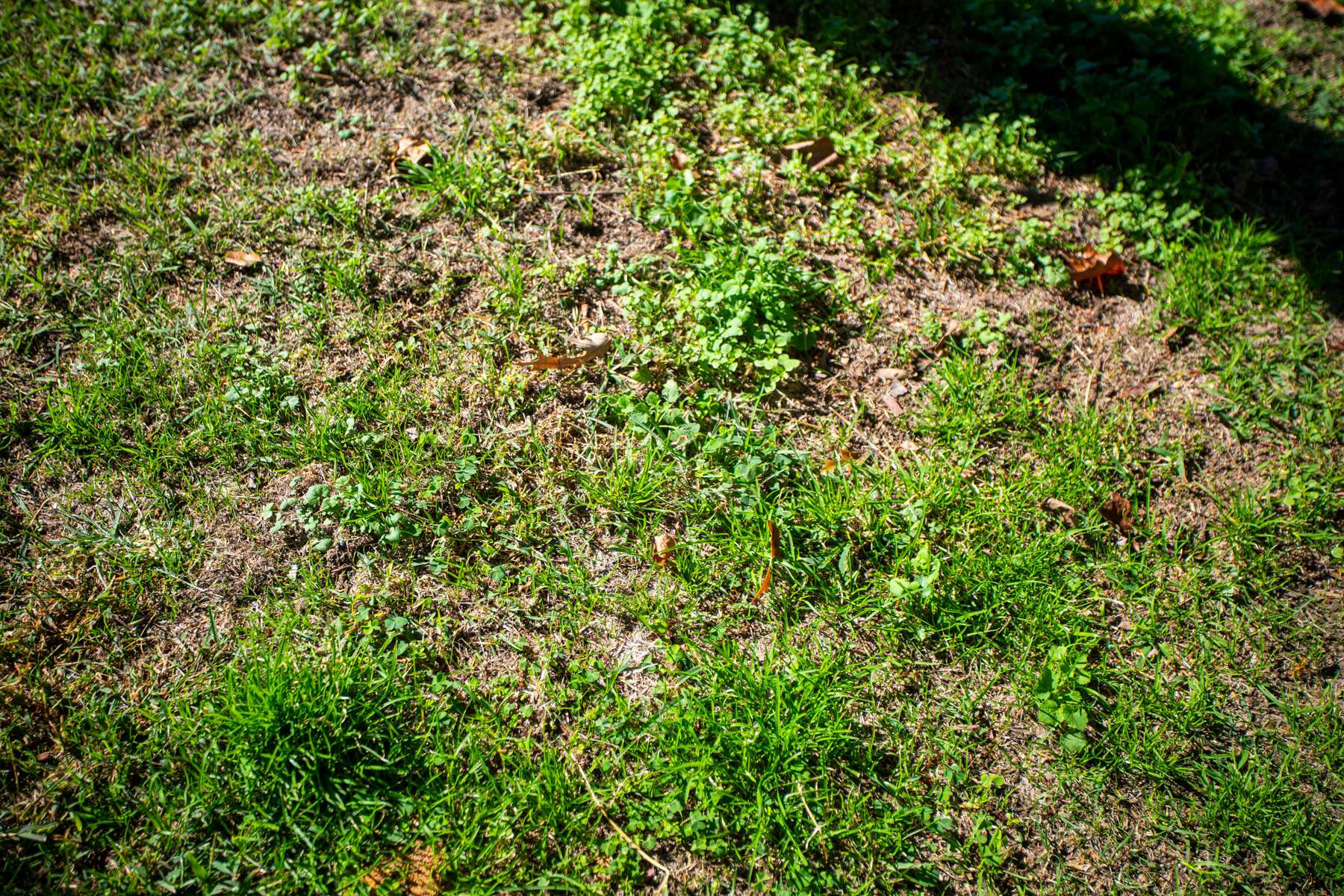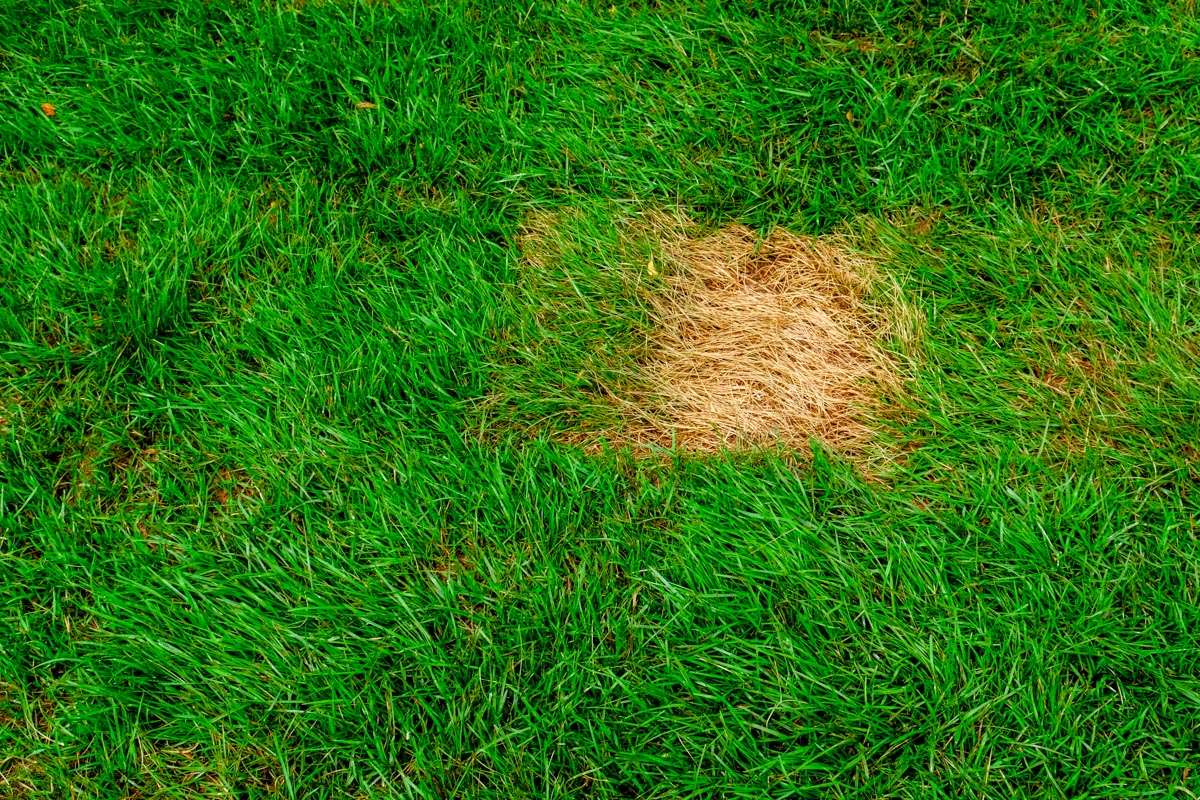So, you take pride in your well-maintained lawn, but there are these frustrating bare spots that just refuse to grow any grass. It’s a real mystery. Well, lucky for you, we’ve got the inside scoop on the common causes of these bare spots. Whether it’s eroded or waterlogged soil, over-fertilizing, or lack of sunlight, we’re here to help you identify the culprit. And not only that, but we’ll also give you solutions like aerating and composting the topsoil, choosing the right grass seeds for your area, and sowing them in the fall for optimal results. Oh, and let’s not forget about the pesky slugs and snails that like to snack on your grass seedlings. Get ready to say goodbye to those bare patches and hello to a lush, green lawn with a little bit of regular maintenance and proper watering.
Introduction
Maintaining a lush and vibrant lawn requires time, effort, and attention to detail. However, even in the most well-maintained lawns, it’s not uncommon to come across bare spots where grass refuses to grow. Identifying the cause of these bare spots is crucial in order to take appropriate measures and restore your lawn to its former glory.
Common Causes of Bare Spots in Well-Maintained Lawns
Eroded Soil
Eroded soil is a common culprit behind bare spots in lawns. Erosion occurs when soil particles are carried away by wind or water, leaving behind patches of bare ground. This can be caused by factors such as heavy rainfall, poor drainage, or even foot traffic on the lawn.
Waterlogged Soil
Waterlogged soil is another common cause of bare spots. When soil becomes saturated with water and lacks proper drainage, it can suffocate the roots of the grass, inhibiting their growth. This can occur due to poor soil composition, compacted soil, or inadequate drainage systems.
Over-fertilizing
While fertilizing your lawn can provide essential nutrients for healthy grass growth, overdoing it can have adverse effects. Over-fertilization can result in burned grass, stunted growth, and even bare spots. Excessive amounts of fertilizer can cause the roots to become overwhelmed, leading to the death or decline of grass in certain areas.
Lack of Sunlight
Grass, like any other plant, requires sunlight to undergo photosynthesis and thrive. Insufficient exposure to sunlight can hinder the growth and development of grass, causing bare spots. This can be a result of shading from trees or structures, overgrown vegetation, or even improper lawn mowing techniques.
Unsuitable Grass Seeds
Selecting the right type of grass seeds for your lawn is crucial for successful growth. Using unsuitable grass seeds that are not suited to your area’s climate, soil conditions, or maintenance requirements can result in patchy and bare spots. It’s essential to consider factors such as shade tolerance, drought resistance, and overall maintenance needs when choosing grass seeds.
Improper Sowing Time
Timing is everything when it comes to sowing grass seeds. Planting seeds at the wrong time of the year can hinder their germination and establishment, leading to bare spots. It’s important to sow grass seeds during the optimal season for your specific grass type and region, typically in the fall when soil temperatures and moisture levels are favorable.
Damage by Slugs and Snails
Slugs and snails can wreak havoc on your lawn, particularly on young and tender grass seedlings. These pests feed on the grass, leaving behind trails of slime and chewed foliage. Their activity can result in bare spots and patches of damaged grass. Identifying and addressing slug and snail damage is essential to prevent further destruction.
Insufficient Maintenance
Proper maintenance is crucial for a healthy and vibrant lawn. Neglecting routine care tasks such as regular mowing, watering, and weeding can lead to the development of bare spots. Lack of maintenance can create an environment where weeds and other invasive species thrive, overpowering the grass and leaving gaps in its growth.
Improper Watering
Watering your lawn is essential, but it’s important to do it correctly. Overwatering or underwatering can both have detrimental effects on grass growth. Inconsistent watering patterns, shallow watering, or excessive irrigation can result in uneven moisture distribution, leading to bare spots. It’s important to water deeply and infrequently, allowing the roots to establish and reach deep into the soil.
Other Possible Causes
In addition to the common causes mentioned above, there are other factors that can contribute to bare spots in well-maintained lawns. Pest infestations, such as grubs or insects, can damage the grass and create bare patches. Disease or fungal infections can also impact the health and appearance of your lawn. Chemical damage from herbicides or other substances, along with animal damage, can contribute to the occurrence of bare spots. Additionally, lawns with shallow root systems are more prone to developing bare spots as the grass struggles to access sufficient nutrients and water.
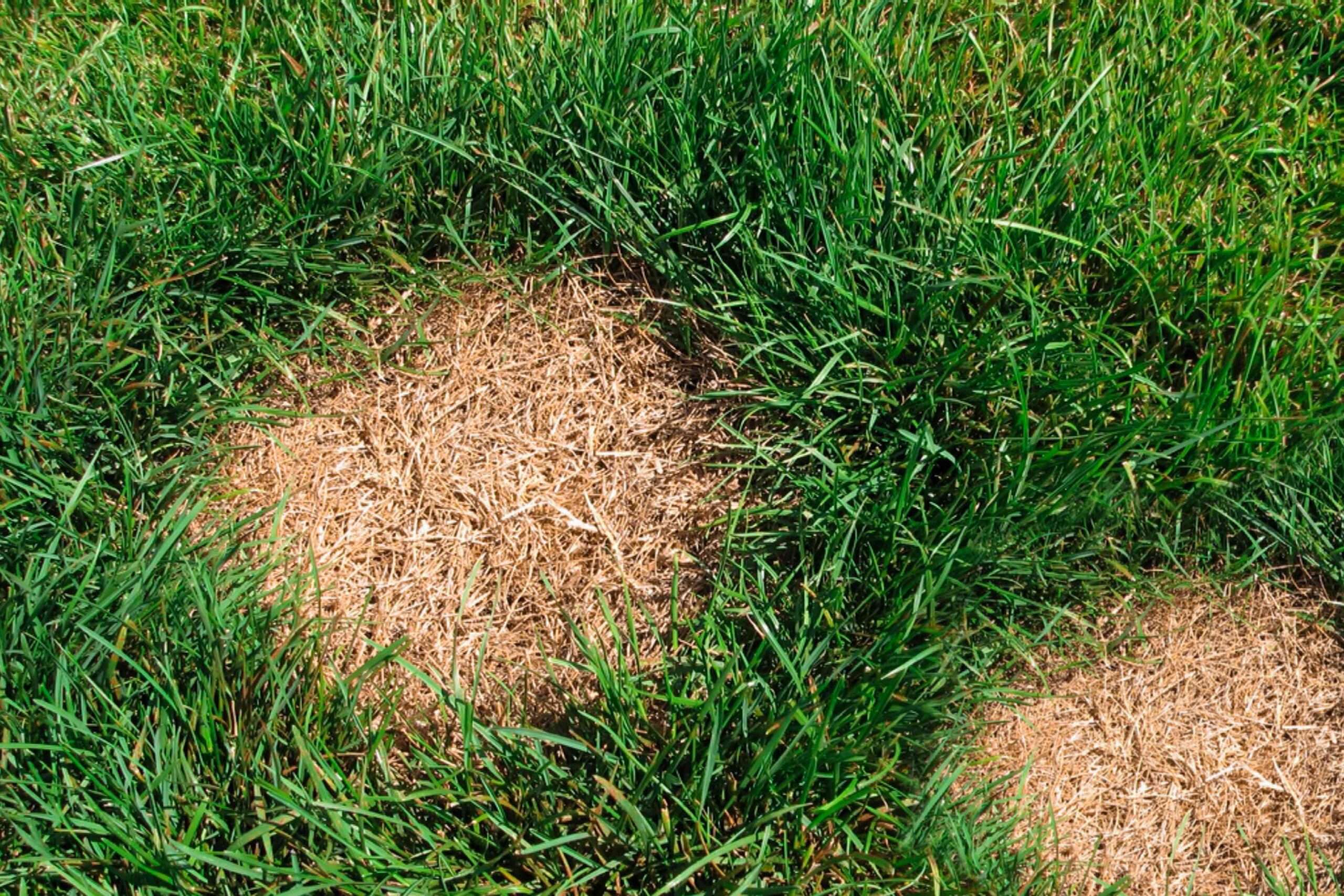
Eroded Soil
Definition and Causes of Eroded Soil
Eroded soil refers to soil that has been removed or displaced due to the forces of wind or water. This can occur when the topsoil is vulnerable to erosion, such as in sloped areas or areas with poor ground cover. Heavy rainfall, improper drainage, or even foot traffic on the lawn can contribute to soil erosion.
Effects of Eroded Soil on Grass Growth
When soil erosion takes place, it leaves behind bare patches where grass struggles to take root and establish itself. The loss of topsoil, which contains essential nutrients and organic matter, can deprive the grass of the necessary resources for healthy growth. As a result, grass in eroded areas may appear weak, stunted, or even nonexistent.
How to Remediate Eroded Soil
Remediating eroded soil involves replenishing the lost topsoil and addressing the underlying causes of erosion. Aeration can be beneficial, as it helps improve soil structure and reduce compaction. Applying organic matter, such as compost, can enhance the soil’s fertility and ability to retain moisture. Implementing erosion control measures, such as terracing, installing retaining walls, or creating swales, can also effectively prevent further soil erosion and promote grass growth.
Waterlogged Soil
Definition and Causes of Waterlogged Soil
Waterlogged soil occurs when the ground becomes oversaturated with water, leaving no room for air pockets. This can happen due to poor drainage, compacted soil, or heavy clay soils that have a low permeability rate. Excessive rainfall or overwatering can lead to waterlogged soil conditions.
Effects of Waterlogged Soil on Grass Growth
When soil is waterlogged, the roots of the grass are deprived of oxygen, leading to their suffocation. As a result, grass in waterlogged areas may exhibit shallow root systems and weak, stunted growth. The excess moisture can also promote the growth of harmful pathogens or fungi, which further impede grass growth.
How to Improve Waterlogged Soil Drainage
Improving drainage in waterlogged soil is crucial to promote healthy grass growth. One option is to aerate the soil, which involves creating small holes to allow air and water to penetrate deeper into the soil. This helps alleviate compaction and improve drainage. Another approach is to incorporate organic matter, such as compost, into the soil, as it improves soil structure and drainage capability. In severe cases, installing a drainage system, such as French drains or subsurface drains, may be necessary to address persistent waterlogging issues.
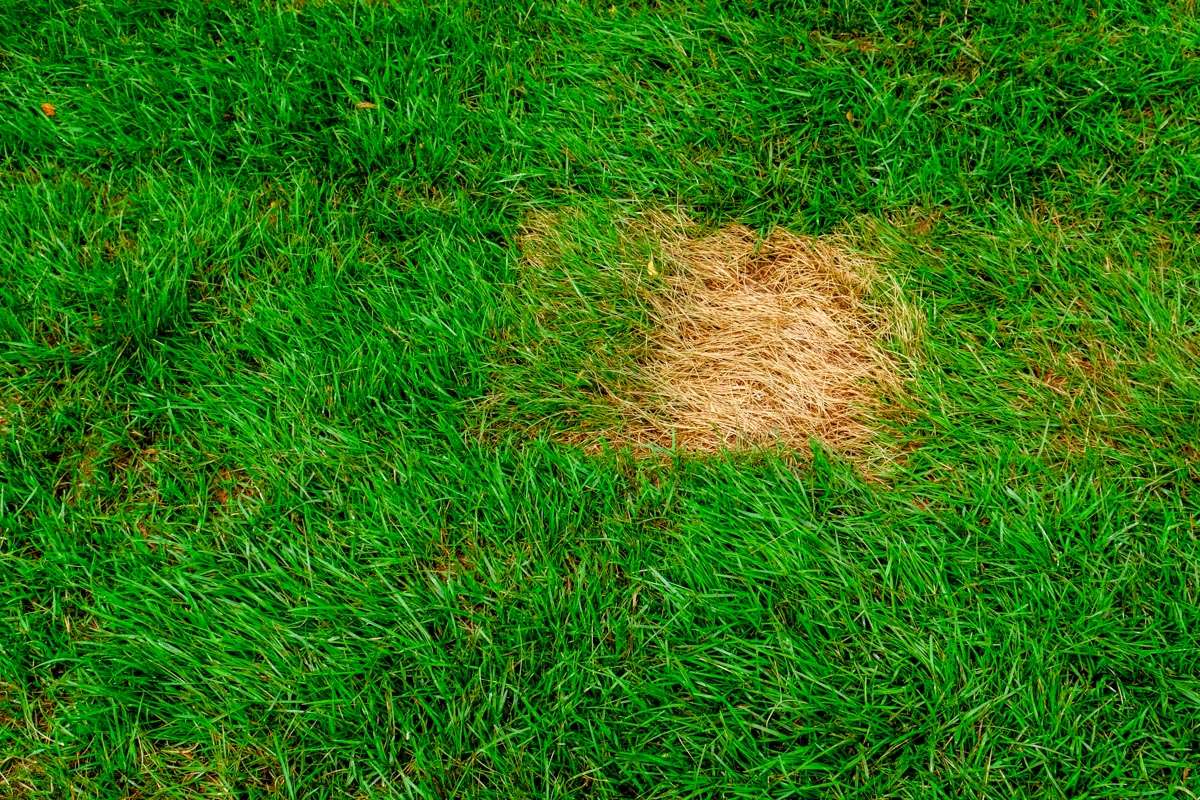
Over-fertilizing
Effects of Over-fertilizing on Grass Growth
While fertilizing your lawn is essential for providing necessary nutrients, overdoing it can have adverse effects. Over-fertilizing can lead to an excessive buildup of salts and chemical compounds, causing root burn and impairing the grass’s ability to absorb nutrients properly. This can result in patchy growth, yellowing or browning of the grass, and even bare spots.
How to Address Over-fertilization Effects
If over-fertilization has caused bare spots in your lawn, it’s important to take corrective measures. Start by thoroughly watering the affected areas to flush out excess salts and chemical compounds. For severe cases, consider removing the top layer of soil and replacing it with fresh topsoil. Adjusting your future fertilization practices to follow recommended guidelines and applying fertilizer at the appropriate times will help prevent further damage and promote healthy grass growth.
Lack of Sunlight
Effects of Lack of Sunlight on Grass Growth
Sunlight plays a crucial role in the photosynthesis process, which provides energy for grass growth. If certain areas of your lawn are shaded for a significant portion of the day, the grass in those spots may struggle to receive the necessary sunlight. This can lead to weakened grass, slower growth, and the development of bare patches.
How to Improve Sunlight Access for Grass
To improve sunlight access for grass in shaded areas, consider pruning or removing overgrown trees or vegetation that may be blocking the sunlight. Strategic lawn mowing techniques, such as raising the height of the grass, can also help ensure that the grass receives sufficient sunlight. If shade is unavoidable due to permanent structures or other factors, consider planting shade-tolerant grass varieties specifically suited to low-light conditions.
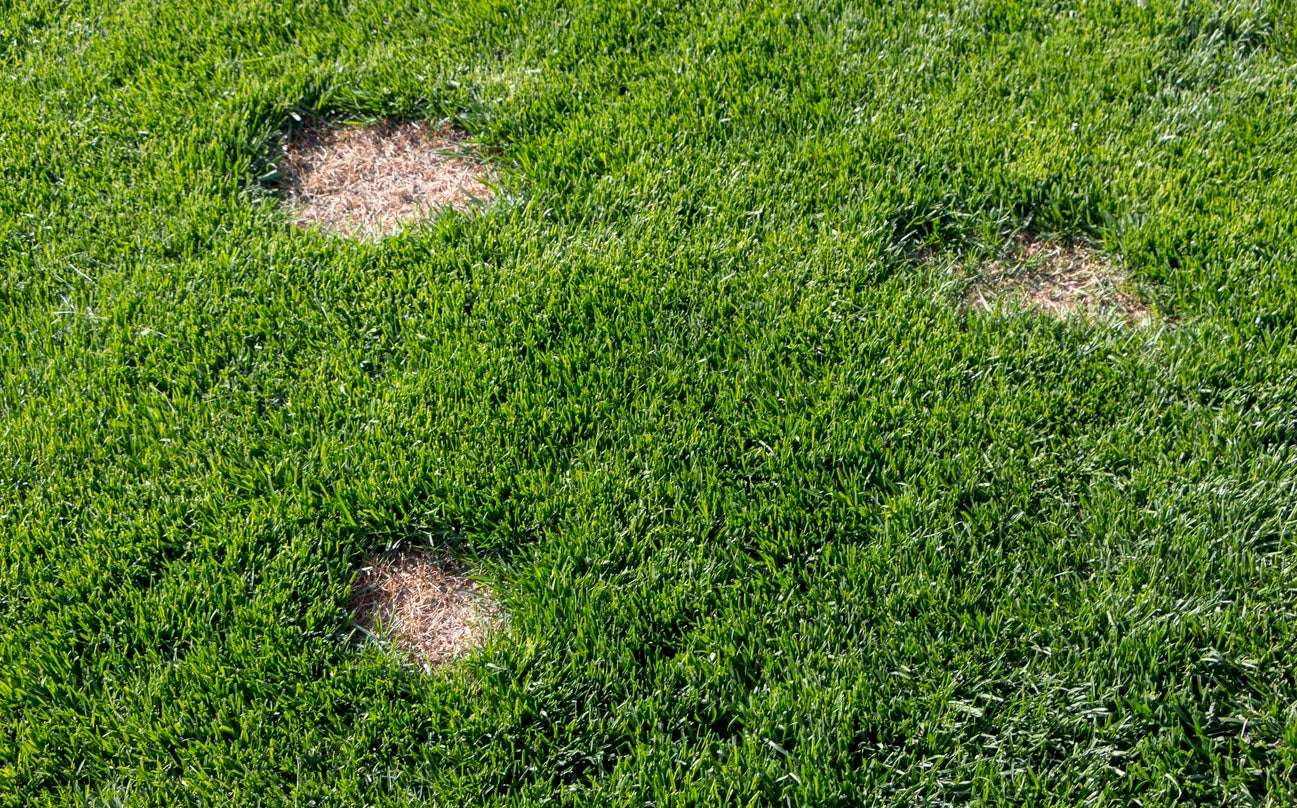
Unsuitable Grass Seeds
Importance of Choosing Suitable Grass Seeds
Choosing suitable grass seeds for your lawn is crucial for successful growth and maintenance. Different grass species and varieties have specific requirements in terms of climate, soil conditions, shade tolerance, and maintenance needs. Using unsuitable grass seeds can lead to poor establishment, weak growth, and the development of bare spots.
Factors to Consider for Choosing Grass Seeds
When selecting grass seeds, consider factors such as your climate zone, average rainfall, soil type, sunlight exposure, and intended use of the lawn (such as high-traffic or recreational areas). Research different grass species and varieties that thrive in your specific conditions and choose those that require low maintenance and are well-suited to your needs.
How to Identify and Replace Unsuitable Grass Seeds
If you suspect that unsuitable grass seeds are the cause of bare spots in your lawn, it’s important to identify the existing grass varieties. Keep an eye out for differences in color, texture, or growth characteristics between the bare spots and the rest of the lawn. Once identified, consider replacing the unsuitable grass with a more suitable variety that matches your lawn’s needs. This can involve overseeding the bare areas with the appropriate grass seeds and following proper watering and maintenance practices to encourage successful establishment.
Improper Sowing Time
Best Time to Sow Grass Seeds
Timing is crucial when it comes to sowing grass seeds. Generally, the best time to sow grass seeds is during the fall season. The soil temperatures and moisture levels during this time create optimal conditions for seed germination and establishment. Sowing in the spring or summer may result in less successful germination and increased competition from weeds.
Effects of Improper Sowing Time on Grass Growth
Sowing grass seeds at the wrong time of the year can hinder their germination and establishment. Seeds sown in unfavorable conditions may struggle to establish a strong root system and compete with weeds and other invasive plants. This can result in poor grass growth, patchy areas, and bare spots.
How to Address Poor Grass Germination
If poor grass germination due to improper sowing time has led to bare spots, consider overseeding the affected areas during the appropriate sowing season. Prepare the soil by removing any debris, loosening the top layer, and incorporating organic matter if needed. Follow proper watering and maintenance practices to provide optimal conditions for seed germination and establishment. Regularly monitor the bare spots and make adjustments as necessary to encourage successful grass growth.
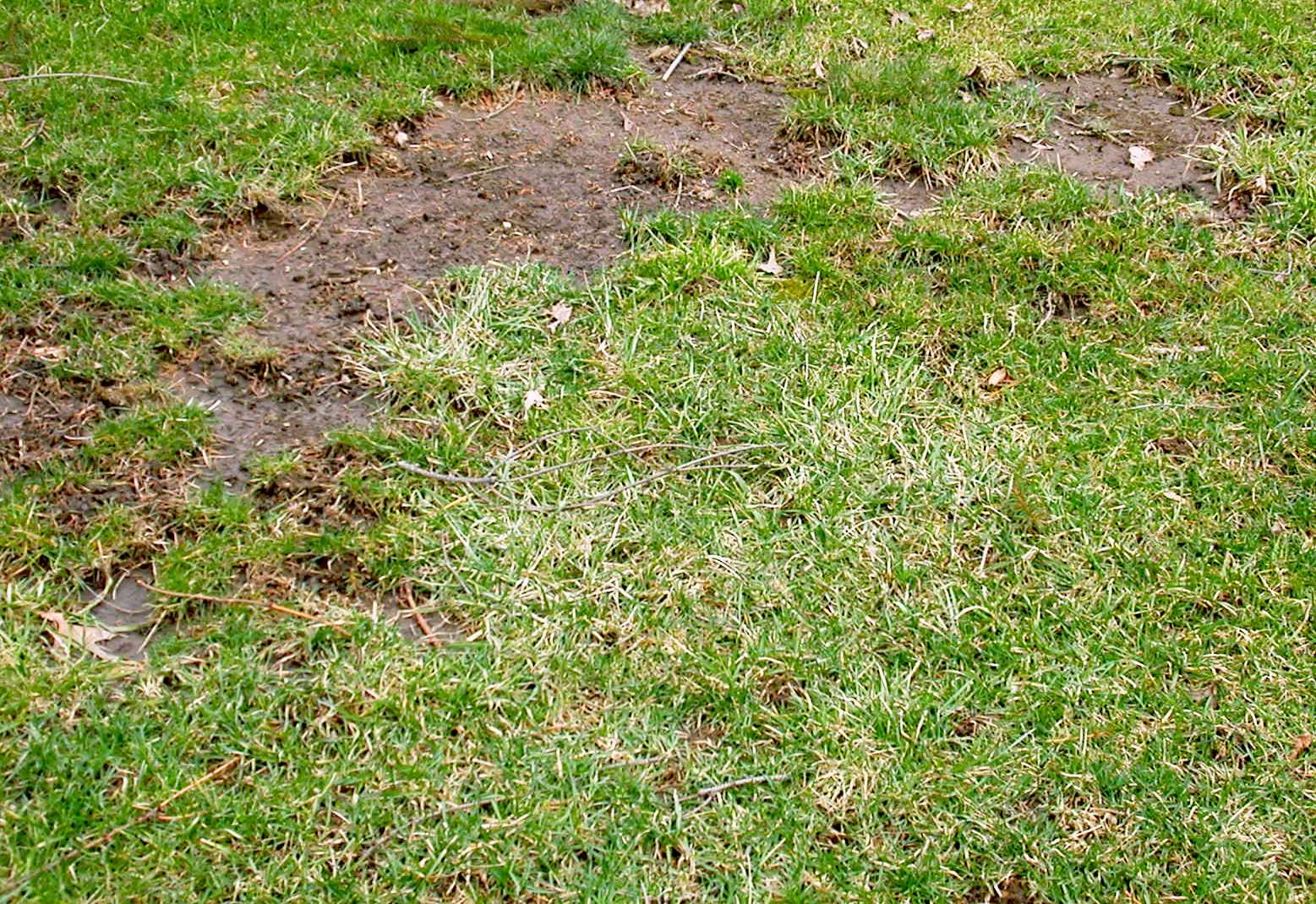
Damage by Slugs and Snails
Identification of Slug and Snail Damage
Slugs and snails are common pests that can wreak havoc on your lawn. Identifying their damage is crucial in order to effectively address the issue. Look for chewed foliage, irregular holes in the grass, slime trails, or even the presence of the pests themselves. This can help you differentiate between damage caused by slugs and snails and other factors, such as disease or animal damage.
Effects of Slug and Snail Damage on Grass Growth
When slugs and snails feed on grass, they can cause significant damage, especially to young and tender grass seedlings. The damage can range from small holes in the grass blades to larger areas of patchy or bare spots. If left uncontrolled, these pests can hinder grass growth and negatively impact the overall health and appearance of your lawn.
Effective Control and Prevention Methods
To control and prevent slug and snail damage, consider implementing various strategies. Physical barriers, such as copper tape or crushed eggshells, can help deter these pests from reaching your grass. Natural predators, such as birds or frogs, can also help keep slug and snail populations in check. Applying organic or chemical-based slug and snail repellents can be effective, but it’s important to follow the manufacturer’s instructions and ensure the products are safe for use on lawns. Regular monitoring and removal of slugs and snails can also help keep their populations under control and minimize damage.
Other Possible Causes
Pest Infestation
Pest infestations, such as grubs or other insects, can contribute to the development of bare spots in lawns. These pests feed on the grass roots, causing damage that can result in weakened or dead patches of grass. Implementing integrated pest management techniques, such as applying beneficial nematodes or using targeted insecticides, can help address pest infestations and prevent further damage.
Disease or Fungal Infection
Diseases or fungal infections can spread and affect the health and appearance of your lawn. Common lawn diseases, such as brown patch or powdery mildew, can cause bare spots and prevent grass from growing. Fungicides and proper lawn care practices, such as avoiding overwatering and improving air circulation, can help manage and prevent the spread of diseases.
Chemical Damage
Chemical damage from herbicides, pesticides, or other substances can result in the development of bare spots in lawns. Overspraying, improper application, or exposure to harmful chemicals can harm the grass and inhibit its growth. It’s important to carefully read and follow the instructions of any chemicals used on your lawn and to avoid applying them during unfavorable conditions.
Animal Damage
Animal damage, such as from digging or grazing, can also create bare spots in lawns. Animals like dogs, rabbits, or even wildlife can cause physical damage to the grass, resulting in patches of bare ground. Implementing physical barriers, deterrents, or modifying the environment can help prevent animal damage and promote healthy grass growth.
Shallow Root System
Lawns with shallow root systems are more prone to bare spots and patchy growth. Shallow roots struggle to access sufficient nutrients and water, leading to weakened grass and the development of bare patches. Improving soil conditions through aeration, adding organic matter, and following proper watering and maintenance practices can help encourage deeper root growth and minimize the occurrence of bare spots.
In conclusion, bare spots in well-maintained lawns can be caused by a variety of factors, including eroded soil, waterlogged soil, over-fertilization, lack of sunlight, unsuitable grass seeds, improper sowing time, slug and snail damage, insufficient maintenance, improper watering, and other possible causes. It’s important to identify the specific cause in order to take appropriate measures and restore your lawn to its full potential. By addressing the underlying issues and implementing proper lawn care practices, you can successfully fill in bare patches and enjoy a healthy and vibrant lawn.
